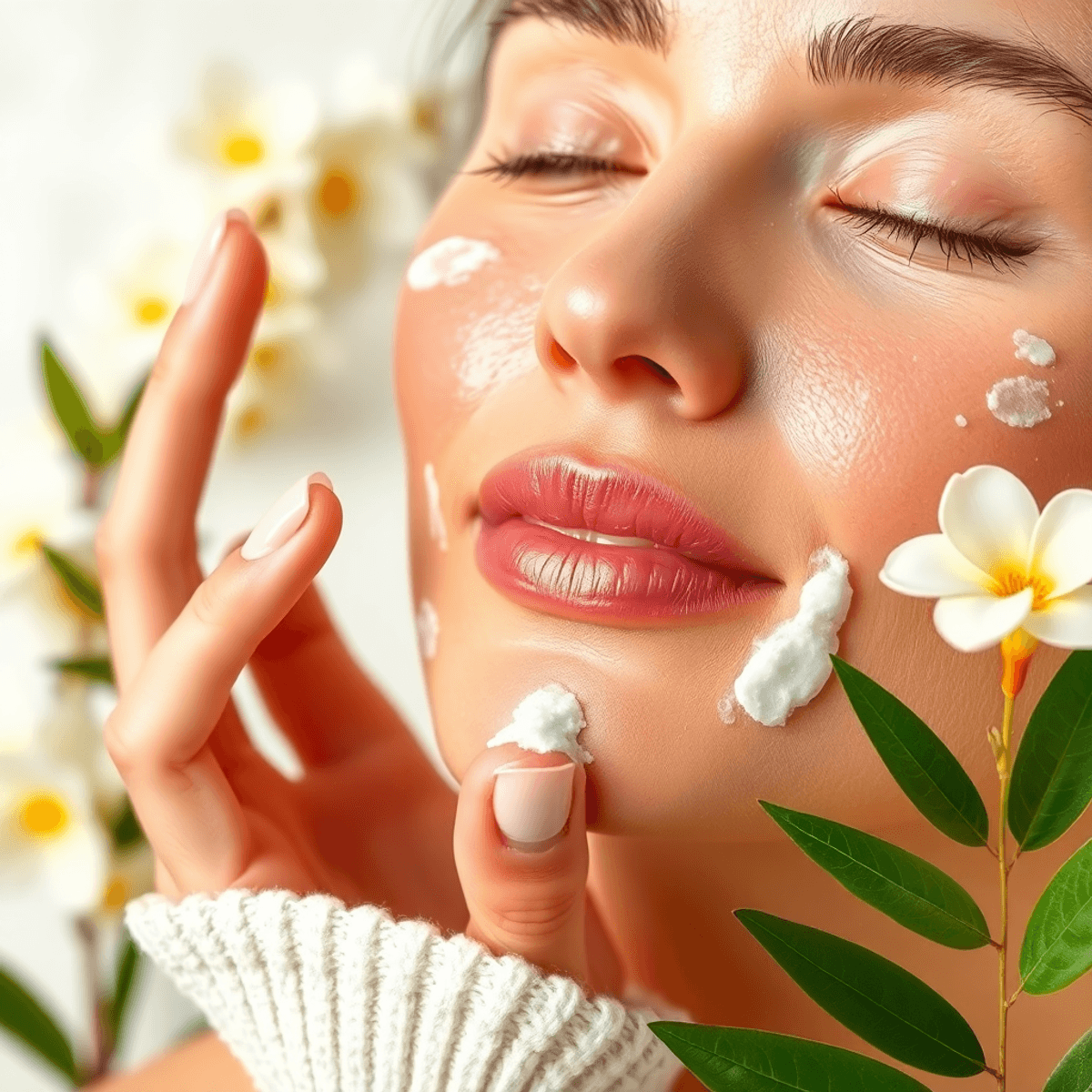Exfoliants 101: How to Choose and Use Them, According to Dermatologists

Introduction
Achieving radiant, healthy skin requires more than just cleansing and moisturizing. Exfoliation is a crucial step in any effective skincare routine, yet many people struggle with choosing and using the right exfoliants for their skin type.
Think of your skin as a garden that needs regular maintenance. Dead skin cells can accumulate like fallen leaves, creating a barrier that prevents your other skincare products from working effectively. Regular exfoliation removes this buildup, revealing fresher, brighter skin underneath.
This comprehensive guide breaks down everything you need to know about exfoliation:
- Different types of exfoliants and how they work
- Matching exfoliants to your skin type
- Step-by-step application techniques
- Potential risks and how to avoid them
- Professional guidance for optimal results
Dermatologists play a vital role in understanding safe and effective exfoliation practices. Their expertise helps identify the most suitable products and routines for different skin types and concerns. Dr. Sarah Chen, a board-certified dermatologist, notes:
“Proper exfoliation can transform your skin, but it’s essential to choose the right method and frequency for your specific skin type. What works for one person might irritate another’s skin.”
Let’s explore the science-backed methods of exfoliation that dermatologists recommend for achieving your best skin yet.
Understanding Exfoliation
Exfoliation is a powerful skincare technique that removes dead skin cells from your skin’s surface. This natural process helps reveal the fresh, healthy skin underneath while promoting cell turnover and rejuvenation.
Your skin naturally sheds dead cells every 30 days, but this process can slow down due to various factors:
- Age
- Skin conditions
- Environmental factors
- Lifestyle habits
When dead skin cells accumulate, they can create:
- Dull, lackluster appearance
- Rough texture
- Clogged pores
- Uneven skin tone
- Difficulty in product absorption
The Science Behind Exfoliation
The process works by breaking down the bonds between skin cells in the uppermost layer of your skin, called the stratum corneum. This action accelerates your skin’s natural renewal process, leading to:
- Enhanced skin clarity
- Improved texture
- Better product penetration
- Increased circulation
- Stimulated collagen production
Physical Exfoliants
Physical exfoliants work through direct contact with your skin’s surface. These mechanical scrubs contain small particles that physically remove dead skin cells through manual friction.
Common Physical Exfoliant Ingredients:
- Sugar granules
- Salt crystals
- Crushed nuts
- Jojoba beads
- Coffee grounds
- Microfiber cloths
- Facial brushes
The mechanism behind physical exfoliation relies on the abrasive action of these particles against your skin. As you massage these products in circular motions, they dislodge and sweep away dead skin cells, debris, and surface-level impurities.
Benefits of Physical Exfoliation:
- Immediate results
- Improved circulation
- Enhanced product absorption
- Smoother skin texture
- Brighter complexion
Key Considerations for Physical Exfoliants:
- Particle Size: Larger, irregular particles can create micro-tears in your skin
- Pressure Applied: Too much pressure during application can cause irritation
- Frequency: Over-exfoliation can damage your skin barrier
- Skin Sensitivity: Some physical exfoliants might be too harsh for sensitive skin
Chemical Exfoliants
Chemical exfoliants are specialized skincare ingredients that break down the bonds between dead skin cells through a chemical reaction. Unlike physical scrubs, these products work at a molecular level to reveal fresh, renewed skin.
Types of Chemical Exfoliants:
- Glycolic Acid: Derived from sugarcane, penetrates deeply for significant cell turnover
- Lactic Acid: A gentler option from milk, ideal for sensitive skin
- Mandelic Acid: Made from bitter almonds, offers gradual exfoliation
- Salicylic Acid: Oil-soluble acid that deeply cleanses pores
- Betaine Salicylate: A milder alternative to traditional salicylic acid
- Gluconolactone: Large molecules provide gentle exfoliation
- Lactobionic Acid: Hydrating properties while removing dead cells
Chemical exfoliants dissolve the “glue” holding dead skin cells together through a process called desquamation. AHAs work on the skin’s surface, making them effective for addressing texture and pigmentation issues. BHAs penetrate oil-filled pores, making them excellent for treating acne and blackheads.
These ingredients also offer additional benefits beyond exfoliation:
- Stimulate collagen production
- Improve skin hydration
- Enhance product absorption
- Balance skin pH levels
- Target specific skin concerns like hyperpigmentation
The strength of chemical exfoliants varies from gentle daily-use formulations to professional-grade treatments. You’ll find them in various forms:
- Toners
- Serums
- Peel pads
- Leave-on treatments
- Masks
The effectiveness of chemical exfoliants depends on factors like pH level and concentration. Professional guidance helps determine the right combination for your skin needs.
Choosing the Right Exfoliant for Your Skin Type
Your skin type plays a crucial role in selecting an effective exfoliant. Here’s a detailed breakdown of exfoliant recommendations based on different skin types and concerns:
Normal Skin
- Versatile enough to handle most exfoliants
- Start with mild AHAs like lactic acid (5-10%)
- Physical exfoliants with round beads work well
Oily/Acne-Prone Skin
- BHAs (salicylic acid) penetrate oil-clogged pores
- Glycolic acid helps control excess sebum
- Avoid rough physical scrubs that can spread bacteria
Dry/Sensitive Skin
- PHAs (gluconolactone, lactobionic acid) provide gentle exfoliation
- Enzyme-based products from papaya or pineapple
- Rice powder or oatmeal-based physical exfoliants
Combination Skin
- Multi-masking approach: different exfoliants for different areas
- BHA for T-zone, mild AHA for cheeks
- Adjustable pressure when using physical exfoliants
Aging Skin
- Higher concentrations of glycolic acid (10-15%)
- Retinol-based exfoliants for cell turnover
- Avoid harsh physical scrubs that may damage delicate skin
Sensitive Skin Solutions
- Ultra-gentle enzymatic exfoliants
- Low concentration mandelic acid (5%)
- Soft microfiber cloths for physical exfoliation
- Patch test new products on your inner arm
Your skin’s needs may change with seasons, stress levels, or hormonal fluctuations. A gentle approach works best when starting any new exfoliation routine. Red flags like stinging, excessive dryness, or prolonged redness indicate you should decrease frequency or switch to a milder option.
Using Exfoliants Effectively Without Causing Harm to Your Skin Barrier
Proper exfoliation technique is crucial for maintaining healthy skin. Here’s your guide to safe and effective exfoliation practices:
Recommended Frequency by Skin Type
Normal Skin: 2-3 times per week
Oily Skin: 3-4 times per week
Dry/Sensitive Skin: 1-2 times per week
Combination Skin: 2-3 times per week, focusing on oily areas
Signs of Over-Exfoliation to Watch For:
- Redness and irritation
- Tight, shiny skin
- Increased sensitivity
- Burning sensation
- Flaking or peeling
- Breakouts in unusual areas
Step-by-Step Application Guide
Physical Exfoliants:
- Cleanse face with lukewarm water
- Apply a quarter-sized amount of product to damp skin
- Use gentle, circular motions with light pressure
- Spend 30-60 seconds maximum
- Rinse thoroughly with lukewarm water
Chemical Exfoliants:
- Apply to clean, dry skin
- Start with a lower concentration
- Leave on according to product instructions
- Apply moisturizer immediately after
Essential Tips for Safe Exfoliation
- Never exfoliate broken or irritated skin
- Wait 24-48 hours between exfoliation sessions
- Apply sunscreen during daytime use
- Reduce frequency if using retinoids
- Stop immediately if irritation occurs
- Patch test new products on your inner arm
Pro Tip: Start with once-weekly applications and gradually increase frequency based on your skin’s response. Your skin should feel refreshed, not raw or irritated after exfoliation.
Potential Side Effects and Risks
Understanding the potential risks of exfoliation helps you maintain healthy skin and prevent damage. While proper exfoliation brings numerous benefits, improper use can lead to several skin concerns:
Common Side Effects of Over-Exfoliation:
- Persistent redness and inflammation
- Burning or stinging sensations
- Increased sensitivity to skincare products
- Dry, flaky patches
- Tight, shiny skin texture
- Breakouts and irritation
- Increased sun sensitivity
Your skin’s moisture barrier plays a critical role in protecting against environmental stressors and maintaining hydration. Aggressive exfoliation can compromise this protective layer, leading to:
- Dehydration
- Bacterial infections
- Increased susceptibility to UV damage
- Accelerated aging signs
- Hyperpigmentation
Signs of Compromised Moisture Barrier:
- Skin feels tight and uncomfortable
- Increased oil production
- Stinging sensation when applying products
- Rough, uneven texture
- Visible inflammation
- Persistent dryness
Risk Factors That Increase Sensitivity:
- Using multiple exfoliating products simultaneously
- Combining retinoids with harsh exfoliants
- Environmental stress (extreme weather, pollution)
- Existing skin conditions like rosacea or eczema
- Recent facial procedures or treatments
Protecting your skin while exfoliating requires attention to product ingredients and environmental factors. During periods of increased sensitivity, reduce exfoliation frequency and focus on barrier-supporting ingredients like:
- Ceramides
- Hyaluronic acid
- Niacinamide
- Panthenol
- Glycerin
Immediate discontinuation of exfoliation is necessary if you experience persistent irritation or signs of barrier damage. This allows your skin to heal and restore its natural protective functions.
Consulting with a Dermatologist
A dermatologist’s expertise goes beyond general skincare advice. These medical professionals can:
- Analyze your specific skin concerns through professional assessment
- Identify underlying skin conditions that affect your exfoliation needs
- Create customized exfoliation routines based on your skin’s unique characteristics
- Recommend medical-grade products suited to your skin type
Your dermatologist will examine factors such as:
- Skin sensitivity levels
- Presence of active breakouts
- Signs of premature aging
- Previous reactions to skincare products
- Current medications that might affect your skin
Professional guidance becomes particularly valuable if you experience:
- Persistent acne despite over-the-counter treatments
- Uneven skin texture that doesn’t improve with regular exfoliation
- Sensitivity to common exfoliating products
- Skin conditions like rosacea or eczema
Regular checkups and screenings with your dermatologist are essential for maintaining optimal skin health. They can adjust your exfoliation routine seasonally and as your skin needs change. They’ll help you navigate the extensive range of exfoliating products available, ensuring you invest in effective solutions rather than experimenting with potentially harmful options.
A professional assessment can also reveal whether your skin would benefit from in-office exfoliating treatments like chemical peels or microdermabrasion, which offer deeper exfoliation under medical supervision.
Conclusion
Your journey to radiant, healthy skin starts with understanding the power of exfoliation. With knowledge about physical and chemical exfoliants, you’re ready to make informed choices that suit your unique skin needs.
Remember these key takeaways:
- Listen to your skin’s response to exfoliation
- Start slowly with new products
- Maintain consistent but gentle practices
- Prioritize skin barrier health
The path to effective exfoliation isn’t one-size-fits-all. Your skin deserves a thoughtful, personalized approach backed by dermatological expertise. By implementing the guidelines shared in this guide, you’re taking a significant step toward achieving your skincare goals.
Ready to transform your skincare routine? Start by:
- Identifying your skin type
- Selecting appropriate exfoliants
- Following proper application techniques
- Monitoring your skin’s response
Your skin’s health is an investment worth making. With patience, consistency, and the right exfoliation practices, you’ll unlock the natural radiance that lies beneath. Take this knowledge, apply it mindfully, and watch your skin thrive under your informed care.
FAQs (Frequently Asked Questions)
What is exfoliation and why is it important in a skincare routine?
Exfoliation is the process of removing dead skin cells from the surface of the skin. It is important because it helps improve skin texture and appearance, promotes circulation, and enhances product absorption, resulting in smoother skin and a youthful glow.
What are the differences between physical and chemical exfoliants?
Physical exfoliants involve manual scrubbing with abrasive ingredients like sugar granules or crushed nuts to slough off dead skin cells. Chemical exfoliants, on the other hand, use active ingredients such as AHAs (like glycolic acid) or BHAs (like salicylic acid) to dissolve dead skin cells and unclog pores without the need for scrubbing.
How do I choose the right exfoliant for my skin type?
To choose the right exfoliant, first identify your skin type: normal, oily, dry, or combination. For acne-prone skin, chemical exfoliants like salicylic acid may be beneficial, while those with sensitive skin might prefer gentler options like enzyme-based exfoliants.
What are the signs of over-exfoliation and how can I prevent it?
Signs of over-exfoliation include redness, sensitivity, and irritation. To prevent this, it’s recommended to exfoliate based on your skin type—typically no more than twice a week—and pay attention to how your skin reacts after each treatment.
What are common side effects associated with improper use of exfoliants?
Common side effects include redness, sensitivity, and a compromised moisture barrier. It’s crucial to maintain hydration in your skincare routine and avoid excessive use of exfoliants to protect your skin’s natural barrier.
Why should I consult a dermatologist about my exfoliation practices?
Consulting a dermatologist can provide you with personalized recommendations tailored to your specific skin concerns and needs. They can help you select suitable products and establish an effective exfoliation routine that minimizes risks and maximizes benefits.










